Despite the growing amount of customer feedback, most brands still struggle to act on what truly matters. Discover how unified feedback systems are helping brands break silos, analyse real-time signals, and turn raw input into CX strategies that actually deliver.
Everyone’s asking for feedback. Few are truly listening.
Customers are sharing notes in chats, dropping reviews, raising issues in support tickets, and sounding off on social. But despite all that sharing, many don’t feel heard. And it’s not because brands lack the data. It’s because the most valuable signals are scattered, siloed, or simply ignored.
A recent report by BackEngine uncovers some unsettling truths: Nearly one in four companies surveyed has no one clearly responsible for customer feedback. Just 11.1% are using AI to analyse customer conversations. And less than a third of executives check in on that feedback more than once a month.
The consequences? Missed signals. Delayed reactions. And CX that fall far short of rising expectations. In a world of instant everything, collecting feedback in disjointed systems and acting on it weeks or months later just doesn’t cut it.
What’s needed now is something smarter. Something more connected. A system that listens in real time, filters the noise, and transforms raw feedback into meaningful action.
 Isabelle Zdatny, Head of Thought Leadership at the XM Institute, Qualtrics, says, “This ongoing stream of authentic feedback helps organisations identify both emerging issues and systemic patterns that fundamentally transform how they prioritise and deliver CX improvements.”
Isabelle Zdatny, Head of Thought Leadership at the XM Institute, Qualtrics, says, “This ongoing stream of authentic feedback helps organisations identify both emerging issues and systemic patterns that fundamentally transform how they prioritise and deliver CX improvements.”
That’s where unified feedback systems come in. These systems break down silos, connect the dots, and help brands move beyond vanity metrics to genuinely understand their customers. The impact would be better decisions, quicker turnarounds, and CX strategies that deliver.
Why Brands Are Failing to Listen at Scale
With so many feedback tools out there, from pop-up surveys to powerful social listening platforms, many think brands would be nailing customer understanding by now. But most aren’t.
The issue isn’t the effort. It’s that feedback is being gathered, but barely acted on.
“While surveys provide structured snapshots of customer sentiment, the most valuable insights often emerge from analysing unstructured, unsolicited feedback channels – those authentic conversations where customers speak candidly about their experiences without the constraints of predetermined questions,” says Isabelle.
These channels, like chat transcripts, support tickets, and social media, contain the raw, unfiltered voice of the customer. And when analysed at scale, they offer rich context that traditional surveys can’t.
Isabelle cites Hilton as an example. The company discovered that towel quality and quantity were affecting guest satisfaction significantly, not through surveys, but by mining text messages, call centre logs, and social posts. Without tapping into those “unsolicited” channels, this pain point might have gone unnoticed.
The message is clear: surface-level listening isn’t enough. The real insights often lie in the conversations brands aren’t actively seeking, but should be.
From Silos to Signal: The Rise of Unified Feedback Systems
CX isn’t suffering from a data drought. It’s suffering from a data disconnect.
As organisations grow, feedback fragments are scattered across apps, departments, and tools. And suddenly, no one has the full picture.
“The two biggest challenges are organisational silos and data fragmentation… Different teams own different channels… creating a disjointed view of the CX,” says Isabelle.
To tackle this, organisations are adopting enterprise-wide unified feedback systems. These are the systems that pull in data from every touchpoint, whether it’s a cashier interaction, an app review, or a support call.
But it doesn’t stop at tech. Brands are also building cross-functional teams, aligning KPIs across departments, and embedding insights into everyday workflows. This unified approach enables brands to detect systemic issues rather than reacting to isolated events.
Isabelle explains this with an example of KFC. They used such a system to analyse tens of thousands of open-text comments across regions. The insights revealed that fries had become “polarising” in Australia. The finding that led to both product experimentation and a reassessment of the brand’s promise of “craveable food.”
One overlooked detail, once surfaced, helped them realign what the brand promised with what customers actually experienced.
Turning Feedback into Real-Time Action
For decades, CX improvement followed a slow, survey-to-strategy pipeline. But now, that lag can be costly.
“Companies with mature feedback systems are 6.5 times more likely to outperform competitors,” said Eli Portnoy, CEO and Founder of BackEngin, in a report.
Unified systems give brands a complete, real-time view of the customer. This lets teams respond faster and more effectively.
“Unified feedback fundamentally changes how quickly and effectively teams can respond because they’re no longer operating with partial information or waiting for problems to escalate,” says Isabelle.
For example, a service agent fielding a billing issue can now access a customer’s recent app activity, previous chat transcripts, and past survey results, on the spot. This context enables more empathetic and targeted responses, while identifying the underlying root cause, not just the immediate complaint.
Unified systems also help teams detect early warning signals. If similar complaints are popping up simultaneously in chat, calls, and social media, it suggests a deeper systemic issue. With real-time visibility, CX teams can address the root cause before it snowballs into a larger crisis.
Instead of reacting to symptoms, brands can now fix the system. And in doing so, transform CX from a reactive function into a proactive engine of value.
The Future Is Predictive, Not Just Reactive
Unified feedback systems aren’t just making responses faster. They’re reshaping how organisations design, deliver, and evolve their CXs.
Isabelle says, “When you can spot recurring themes in chat transcripts, social media mentions, and support tickets… product teams use them to fuel human-centred design processes and identify unmet needs that drive roadmap decisions.”
The truth is, customers rarely spell out what they want next. But their behaviour leaves clues. Unified feedback turns those clues into insights, helping teams across the organisation innovate faster.
It’s not just product teams that benefit. Brand strategists use these insights to close gaps between promise and delivery. If a brand says “fast service” but feedback shows long queues, that’s not a metric issue; it’s a trust issue.
And this isn’t wishful thinking.
As per a latest report, over 80% of business and technical decision-makers see AI-led CX delivering value across every stage of the technology lifecycle.
With AI models now able to predict loyalty scores for customers who never respond to surveys, brands are combining strategic oversight (like NPS) with real-time agility to cover more ground.
“Rather than replacement, we’re seeing an evolution toward complementary measurement systems… that together provide both the strategic oversight and operational agility that modern CX demands,” says Isaballe.
ALSO READ: Top Drone Delivery Companies Shaping Last-Mile Logistics









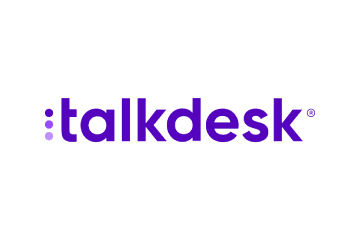

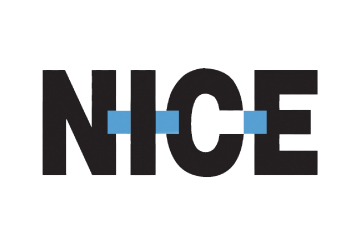


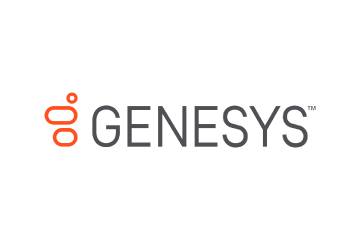




 Amplitude is a product analytics platform, enabling businesses to track visitors with the help of collaborative analytics. The platform leverages the capabilities of
Amplitude is a product analytics platform, enabling businesses to track visitors with the help of collaborative analytics. The platform leverages the capabilities of 

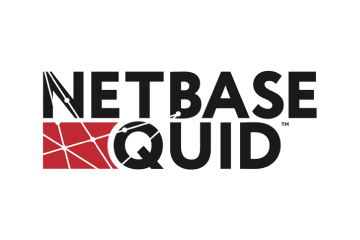


 Zoho Social, a part of Zoho’s suite of 50+ products, is a comprehensive social media management platform for businesses and agencies. The Zoho Social dashboard includes a robust set of features, such as Publishing Calendar, Bulk Scheduler, and Approval Management to offer businesses all the essential social media publishing tools. Its monitoring tools help enterprises track and respond to relevant social conversations.
Zoho Social, a part of Zoho’s suite of 50+ products, is a comprehensive social media management platform for businesses and agencies. The Zoho Social dashboard includes a robust set of features, such as Publishing Calendar, Bulk Scheduler, and Approval Management to offer businesses all the essential social media publishing tools. Its monitoring tools help enterprises track and respond to relevant social conversations.

 Microsoft Dynamics 365 represents a robust cloud-based CRM solution with features such as pipeline assessment, relationship analytics, and conversational intelligence. It utilises AI-powered insights to provide actionable intelligence via predictive analytics, lead scoring, sentiment analysis, etc. Currently, Microsoft operates in 190 countries and is made up of more than 220,000 employees worldwide.
Microsoft Dynamics 365 represents a robust cloud-based CRM solution with features such as pipeline assessment, relationship analytics, and conversational intelligence. It utilises AI-powered insights to provide actionable intelligence via predictive analytics, lead scoring, sentiment analysis, etc. Currently, Microsoft operates in 190 countries and is made up of more than 220,000 employees worldwide.

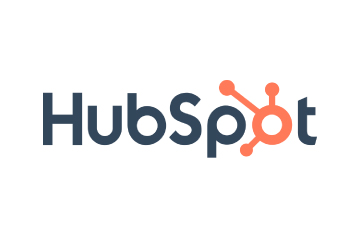 HubSpot is an inbound marketing, sales, and customer service software provider, offering robust CRM and automation solutions. Some of its products include Marketing Hub, Sales Hub, Operations Hub, Content Hub, Commerce Hub, Marketing Analytics and Dashboard Software. Guided by its inbound methodology, HubSpot enables companies to prioritise innovation and customer success.
HubSpot is an inbound marketing, sales, and customer service software provider, offering robust CRM and automation solutions. Some of its products include Marketing Hub, Sales Hub, Operations Hub, Content Hub, Commerce Hub, Marketing Analytics and Dashboard Software. Guided by its inbound methodology, HubSpot enables companies to prioritise innovation and customer success.
 Monday.com is a project management software company, offering a cloud-based platform that enables businesses
Monday.com is a project management software company, offering a cloud-based platform that enables businesses 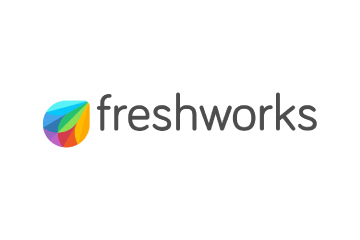 Headquartered in San Mateo, California, Freshworks is a global AI-powered business software provider. Its tech stack includes a scalable and comprehensive suite for IT, customer support, sales, and marketing teams, ensuring value for immediate business impact. Its product portfolio includes Customer Service Suite, Freshdesk, Freshchat, Freshcaller, Freshsuccess, and Freshservice. Freshservice for Business Teams has helped several global organisations to enhance their operational efficiency.
Headquartered in San Mateo, California, Freshworks is a global AI-powered business software provider. Its tech stack includes a scalable and comprehensive suite for IT, customer support, sales, and marketing teams, ensuring value for immediate business impact. Its product portfolio includes Customer Service Suite, Freshdesk, Freshchat, Freshcaller, Freshsuccess, and Freshservice. Freshservice for Business Teams has helped several global organisations to enhance their operational efficiency.
 Talkdesk offers an innovative AI-powered customer-centric tech stack to its global partners. The company provides generative AI integrations, delivering industry-specific solutions to its customers. Talkdesk CX Cloud and Industry Experience Clouds utilise modern machine learning and language models to enhance contact centre efficiency and client satisfaction.
Talkdesk offers an innovative AI-powered customer-centric tech stack to its global partners. The company provides generative AI integrations, delivering industry-specific solutions to its customers. Talkdesk CX Cloud and Industry Experience Clouds utilise modern machine learning and language models to enhance contact centre efficiency and client satisfaction.




 The company offers comprehensive cloud-based solutions, such as Microsoft Dynamics 365, Gaming Consoles, Microsoft Advertising, Copilot, among other things, to help organisations offer enhanced CX and ROI. Its generative-AI-powered speech and voice recognition solutions,such as Cortana and Azure Speech Services empowers developers to build intelligent applications.
The company offers comprehensive cloud-based solutions, such as Microsoft Dynamics 365, Gaming Consoles, Microsoft Advertising, Copilot, among other things, to help organisations offer enhanced CX and ROI. Its generative-AI-powered speech and voice recognition solutions,such as Cortana and Azure Speech Services empowers developers to build intelligent applications.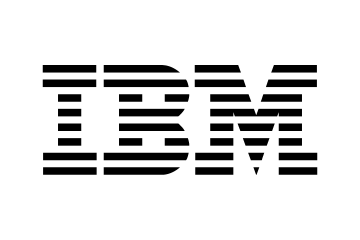 IBM is a global hybrid cloud and AI-powered
IBM is a global hybrid cloud and AI-powered  Uniphore is an enterprise-class, AI-native company that was incubated in 2008. Its enterprise-class multimodal AI and data platform unifies all elements of voice, video, text and data by leveraging Generative AI, Knowledge AI, Emotion AI and workflow automation. Some of its products include U-Self Serve, U-Assist, U-Capture, and U-Analyze. Its Q for Sale is a conversational intelligence software that guides revenue teams with AI-powered insights, offering clarity on how to effectively keep prospects engaged.
Uniphore is an enterprise-class, AI-native company that was incubated in 2008. Its enterprise-class multimodal AI and data platform unifies all elements of voice, video, text and data by leveraging Generative AI, Knowledge AI, Emotion AI and workflow automation. Some of its products include U-Self Serve, U-Assist, U-Capture, and U-Analyze. Its Q for Sale is a conversational intelligence software that guides revenue teams with AI-powered insights, offering clarity on how to effectively keep prospects engaged. Google Cloud accelerates every organisation’s ability to digitally transform its business. Its enterprise-grade solutions leverage modern technology to solve the most criticial business problems
Google Cloud accelerates every organisation’s ability to digitally transform its business. Its enterprise-grade solutions leverage modern technology to solve the most criticial business problems  8×8 offers out-of-the-box contact centre solutions, assisting all-size businesses to efficiently meet customer needs and preferences. It offers custom CRM integrations support and integrates effortlessly with third-party CRMs like Salesforce, Microsoft Dynamics, Zendesk, and more. Offering global support in all time zones & development teams in 5 continents, its patented geo-routing solution ensures consistent voice quality.
8×8 offers out-of-the-box contact centre solutions, assisting all-size businesses to efficiently meet customer needs and preferences. It offers custom CRM integrations support and integrates effortlessly with third-party CRMs like Salesforce, Microsoft Dynamics, Zendesk, and more. Offering global support in all time zones & development teams in 5 continents, its patented geo-routing solution ensures consistent voice quality. Sprinklr is a comprehensive enterprise software company for all customer-focused functions. With advanced AI, Sprinklr’s unified customer experience management (Unified-CXM) platform lets organisations offer human experiences to every customer, every time, across any modern channel.
Sprinklr is a comprehensive enterprise software company for all customer-focused functions. With advanced AI, Sprinklr’s unified customer experience management (Unified-CXM) platform lets organisations offer human experiences to every customer, every time, across any modern channel.


 Upland offers a comprehensive suite of contact centre and customer service solutions with products including InGenius, Panviva, Rant & Rave, and RightAnswers. InGenius enables organisations to connect their existing phone system with CRM, further enhancing agent productivity. Panviva provides compliant and omnichannel capabilities for highly regulated industries. Whereas, Rant & Rave, and RightAnswers are its AI-powered solutions,
Upland offers a comprehensive suite of contact centre and customer service solutions with products including InGenius, Panviva, Rant & Rave, and RightAnswers. InGenius enables organisations to connect their existing phone system with CRM, further enhancing agent productivity. Panviva provides compliant and omnichannel capabilities for highly regulated industries. Whereas, Rant & Rave, and RightAnswers are its AI-powered solutions, 


 Hootsuite, headquartered in Vancouver, is a social media management platform that streamlines the process of managing multiple social media accounts. Some of its core offerings include social media content planning and publishing, audience engagement tools, analytics and social advertising. Its easy-to-integrate capabilities help marketing teams to schedule and publish social media posts efficiently.
Hootsuite, headquartered in Vancouver, is a social media management platform that streamlines the process of managing multiple social media accounts. Some of its core offerings include social media content planning and publishing, audience engagement tools, analytics and social advertising. Its easy-to-integrate capabilities help marketing teams to schedule and publish social media posts efficiently.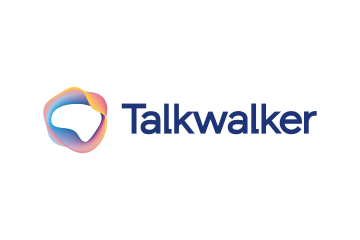
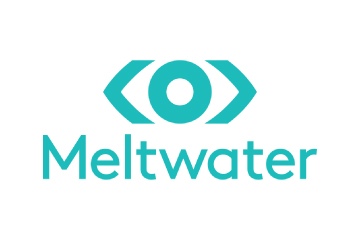
 Brandwatch enables businesses to build and scale the optimal strategy for their clients with intuitive, use-case-focused tools that are easy and quick to master. Bringing together consumer intelligence and social media management, the company helps its users react to the trends that matter, collaborate on data-driven content, shield the brand from threats and manage all the social media channels at scale.
Brandwatch enables businesses to build and scale the optimal strategy for their clients with intuitive, use-case-focused tools that are easy and quick to master. Bringing together consumer intelligence and social media management, the company helps its users react to the trends that matter, collaborate on data-driven content, shield the brand from threats and manage all the social media channels at scale.


 Adobe Experience Cloud offers a comprehensive set of applications, capabilities, and services specifically designed to address day-to-day requirement for personalised customer experiences at scale. Its platform helps play an essential role in managing different digital content or assets to improve customer happiness. Its easy-to-optimise content gives users appropriate marketing streams, ensuring product awareness.
Adobe Experience Cloud offers a comprehensive set of applications, capabilities, and services specifically designed to address day-to-day requirement for personalised customer experiences at scale. Its platform helps play an essential role in managing different digital content or assets to improve customer happiness. Its easy-to-optimise content gives users appropriate marketing streams, ensuring product awareness. Salesforce-owned Tableau is an AI-powered analytics and business intelligence platform, offering the breadth and depth of capabilities that serve the requirements of global enterprises in a seamless, integrated experience. Marketers can utilise generative AI models, AI-powered predictions, natural language querying, and recommendationsons.
Salesforce-owned Tableau is an AI-powered analytics and business intelligence platform, offering the breadth and depth of capabilities that serve the requirements of global enterprises in a seamless, integrated experience. Marketers can utilise generative AI models, AI-powered predictions, natural language querying, and recommendationsons. Contentsquare is a cloud-based digital experience analytics platform, helping brands track billions of digital interactions, and turn those digital
Contentsquare is a cloud-based digital experience analytics platform, helping brands track billions of digital interactions, and turn those digital 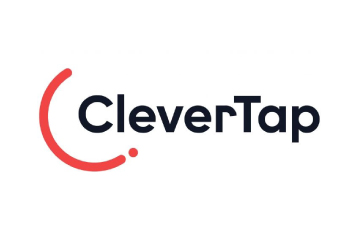


 Zoho Corporation offers innovative and tailored software to help leaders grow their business. Zoho’s 55+ products aid sales and marketing, support and collaboration, finance, and recruitment requirements. Its customer analytics capabilities come with a conversational feature, Ask Zia. It enables users to ask questions and get insights in the form of reports and widgets in real-time.
Zoho Corporation offers innovative and tailored software to help leaders grow their business. Zoho’s 55+ products aid sales and marketing, support and collaboration, finance, and recruitment requirements. Its customer analytics capabilities come with a conversational feature, Ask Zia. It enables users to ask questions and get insights in the form of reports and widgets in real-time. Fullstory is a behavioural data platform, helping C-suite leaders make informed decisions by injecting digital behavioural data into its analytics stack. Its patented technology uncovers the power of quality behavioural data at scale, transforming every digital visit into actionable insights. Enterprises can increase funnel conversion and identify their highest-value customers effortlessly.
Fullstory is a behavioural data platform, helping C-suite leaders make informed decisions by injecting digital behavioural data into its analytics stack. Its patented technology uncovers the power of quality behavioural data at scale, transforming every digital visit into actionable insights. Enterprises can increase funnel conversion and identify their highest-value customers effortlessly.
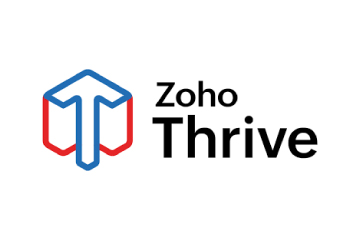
 Started in 2005 in a Sweden-based small town, Norrköping, Voyado offers a customer experience cloud platform that includes a customer loyalty management system. This platform helps businesses design and implement customer loyalty programs, track customer
Started in 2005 in a Sweden-based small town, Norrköping, Voyado offers a customer experience cloud platform that includes a customer loyalty management system. This platform helps businesses design and implement customer loyalty programs, track customer 



 TapMango provides a comprehensive, customisable, flexible and feature-rich customer loyalty program. The loyalty tools include an integrated suite of customised consumer-facing technology, easy-to-use merchant tools, and automation algorithms, all aimed at enhancing customer experience. Adaptable to any industry, TapMango’s platform helps merchants compete with larger chains, converting customer one-time purchases into profitable spending habits.
TapMango provides a comprehensive, customisable, flexible and feature-rich customer loyalty program. The loyalty tools include an integrated suite of customised consumer-facing technology, easy-to-use merchant tools, and automation algorithms, all aimed at enhancing customer experience. Adaptable to any industry, TapMango’s platform helps merchants compete with larger chains, converting customer one-time purchases into profitable spending habits.

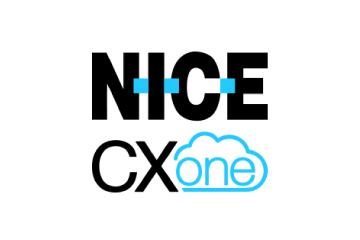




 Adobe Experience Cloud offers a comprehensive set of applications, capabilities, and services specifically designed to address day-to-day requirements for personalised customer experiences at scale. Its innovative platform has played an essential role in managing different digital content or assets, to improve customer happiness or satisfaction. Some of its products include Adobe Gen Studio, Experience Manager Sites, Real-time CDP, and Marketo Engage.
Adobe Experience Cloud offers a comprehensive set of applications, capabilities, and services specifically designed to address day-to-day requirements for personalised customer experiences at scale. Its innovative platform has played an essential role in managing different digital content or assets, to improve customer happiness or satisfaction. Some of its products include Adobe Gen Studio, Experience Manager Sites, Real-time CDP, and Marketo Engage.

